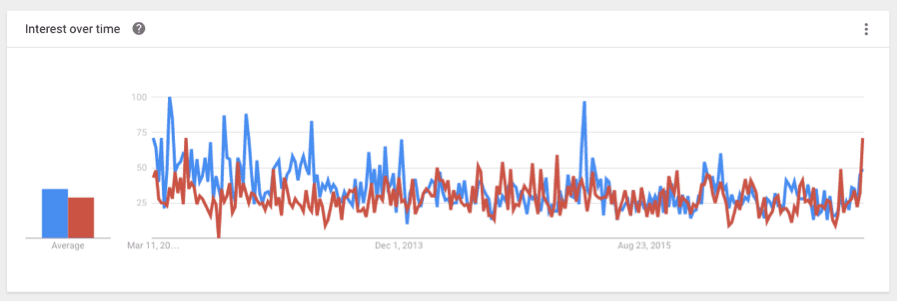Using Google Tools to Help Title Your Book

The title (and subtitle) of a book does a lot of heavy lifting. It has to attract the intended audience, communicate the book’s promise, differentiate the book in the marketplace, and accurately convey the book’s theme and content.
While there’s no single way to determine if a book title is going accomplish all those goals in such a way that propels the book to success, there are tools available to help authors make informed titling decisions.
Two tools that are used frequently are Google Keyword Planner and Google Trends.
Both are publicly available databases that allow users to explore and compare the number of searches for a specific keyword over time, across various regions, and in a variety of languages. This information is particularly helpful for determining if a keyword being considered for title of subtitle usage is widely used, and thus beneficial for connecting with the intended audience, or on the cusp of trending, allowing the author to take advantage of the many benefits of being the first to establish usage.
As a real-life example, an author writing a parenting book was considering using the following keywords in the subtitle:
Option 1: Raising Successful Kids
Option 2: Raising Teens
When using Google Keyword Search to compare the two keyword strings on the basis of search volume, Google suggests “raising teenagers” as opposed to “raising teens” which has an average monthly search volume worldwide of as much as 10x that of “raising successful kids.”

When comparing the two keyword strings, using Google Trends, “raising successful kids” yields no trending interest over the last 5 years, while “raising teens” trending interest averages approximately 20 searches per day worldwide.

Taking Google Keyword Planner’s recommendation to use “raising teenagers” as opposed to “raising teens”, “raising teenagers” trending interest over the last 5 years is approximately twice that of “raising teens”, averaging approximately 40 searches per day worldwide.

Interest by region is inconclusive for all keyword strings under consideration aside from “raising teenagers” with 100% of the trending search volume originating form the United States.

Using the feedback from both Google Keyword Planner and Google Trends, the recommendation yielded an option that wasn’t originally under consideration: raising teenagers.
It’s also important to be sure that any keywords or keywords strings being used in the title or subtitle are incorporated into the content of the book. This is significant because the keywords used in the title must be reinforced in the content in order to influence the book’s position within Amazon search results. While keywords used in the title or subtitle are weighted more heavily when determining search results, the more times a keyword appears in the content (which is indexed by Amazon when the Look Inside feature is activated – learn more about why it’s important to activate book previews here), the higher the book will be positioned within search results.
In the end, there’s an art and a science to selecting the perfect title for your book and there are tools available to provide insight and direction when making the final decision.
